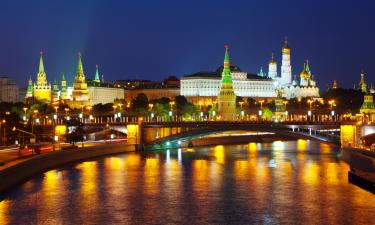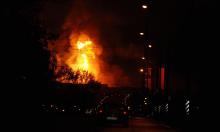Baltic States and Revisionism
Among the three Baltic States of Estonia, Lithuania and Latvia, the latter is perhaps the worst offender
As the people in the Baltic States celebrate the fifteenth anniversary of their independence from the Soviet Union, it is important to see some home truths among the wave of nationalism which is always accompanied by anti-Russian propaganda.
Among the three Baltic States of Estonia, Lithuania and Latvia, the latter is perhaps the worst offender as regards a policy of revisionism, painting a rosy picture of its history while spewing out blind hatred of Moscow and all things Russian. Riga, however, would do well to adopt a less abrasive stance.
Latvia's History Commission Report Noziegumi pret Cilveci (Crimes against Humanity) would have us believe that the Latvian people's spirit was so broken by the Soviet invasion of 1940 that nobody had the energy or the will to stop the Germans perpetrating the worst crimes during the four years of their occupation.
Indeed, this is the idea the three Baltic States would have their populations, and the rest of the world, believe. Let us however delve into the history of those four years between 1941 and 1945, when these countries were liberated from the Fascist yolk of Hitler's forces by the Soviet Union (or would they prefer to claim they were invaded a second time and that they preferred Hitler's Nazis?)
Latvia
As far as Latvia is concerned, the Latvian Waffen SS Division was staffed by Latvian officers and troops, not Germans and these carried out acts of almost indescribable cruelty in the concentration and extermination camps. Indeed, the Latvians began building concentration camps long before Hitler arrived on the scene – the Fascist dictator Karlis Ulmanis began building one in 1934.
The concentration and extermination camps in Latvia were not one or two. Apart from the infamous Mezaparks Camp at Kaiserwald near Riga, there were Daugavpils, Lenta, Liepaja, Strazdu Manor, Dundaga, Jelgava, Valmiera, Salaspils and Jumpravmuita. Between 70,000 and 85,000 Latvian Jews were exterminated in these camps, which counted on the willing collaboration and active participation of a substantial number of Latvians.
Estonia
Most of Estonia's 4,500 Jews managed to escape before the Nazi Panzers rolled over the border. However, sadly most of the 1,000 to 1,500 who remained were murdered. As in Latvia, this extermination policy counted on the willing participation of national citizens, the Estonian SS Division and the 287th Estonian Police Battalion bearing witness to this.
Estonia had even more concentration and extermination camps than Latvia: Auvere, Aseri, Dorpat, Ereda, Goldfields, Idu-Virumaa, Illinurme, Jagala, Johvi, Kalevi-Liiva, Kivioli, Klooga, Kukruse, Kunda, Kuremae, Lagedi, Narva, Narva-Joesuu, Petschur, Putki, Saka, Stara Gradiska, Sonda, Soski, Tartu, Vaivara, Viivikonna and Wesenburg. A violent anti-Romany policy was also carried out in this country, virtually annihilating all the country's gypsy population.
Lithuania
Here, complicity with the Germans in annihilating the Jewish population saw the extermination of between 135,000 and 220,000 people. Few survived the horrors of the camps at Kovno (Kaunas), Kauen, Slobodka, HKP at Vilna and Prawienischken.
Groups of Lithuanian youths began attacking Jews in Kovno even before the Germans invaded on 24th June 1941 and during the occupation, the Lithuanian auxiliaries of the Einsatzgruppe and the Lithuanian Security Police willingly carried out acts of mass butchery.
For these three countries painting a pretty picture of themselves at the expense of the Soviet Union, one has only to look through the long list of concentration and extermination camps built and functioning in just four years. Not bad for three small states in such a short space of time.
If the Soviet Union had not liberated them and put a stop to these satanic practices, who knows how many more innocent people would have been murdered?
The point is that all nations must accept their history, accepting the good along with the bad, for all countries have brilliant and heroic chapters of history and other chapters that are less brilliant and less heroic. Only by accepting the bad along with the good can a nation assume itself as a geo-political and social entity, move on and at the same time have open and friendly relations with its neighbours, instead of scowling at them and having a massive chip on their shoulder, like the three Baltic States.
Timothy Bancroft-Hinchey
Discuss this article on Pravda.Ru English Forum
Subscribe to Pravda.Ru Telegram channel, Facebook, RSS!




